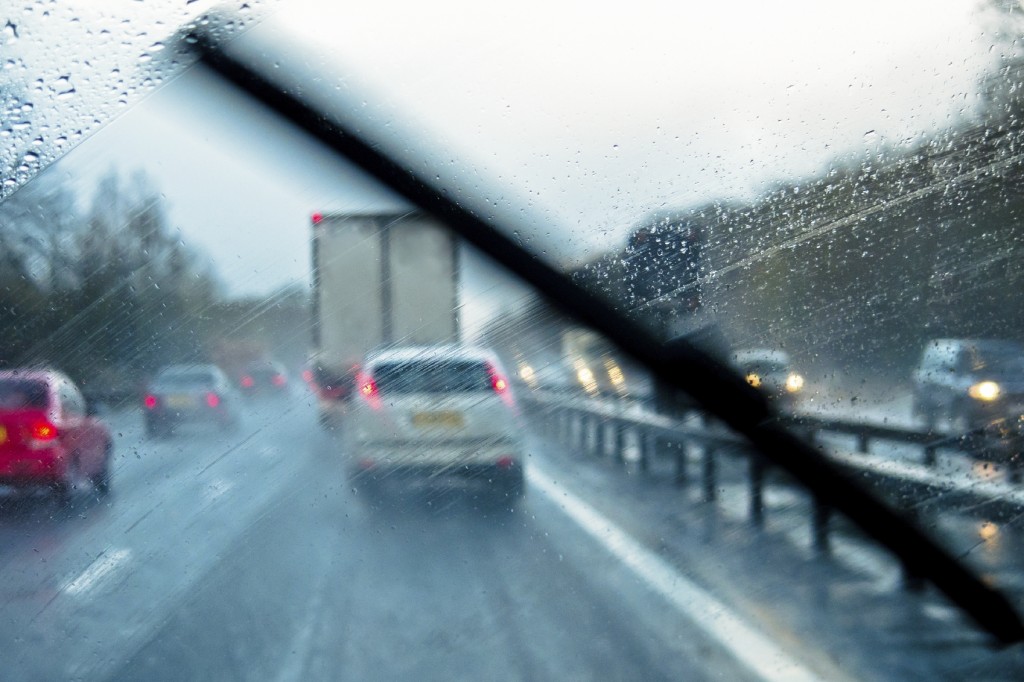


Skidding happens on slick roads while hydroplaning occurs when standing water on the road is deep enough that the treads lose contact with the road.
#Driving in heavy rain how to
How to respond to a skid in the rainįirst, let’s clarify the difference between skidding and hydroplaning. After the rain washes the oil away, the roads will be safer but you should still drive cautiously. This is a particularly dangerous time as the rain will mix with the oil on the road to make roads slicker. After all, they’re going to need longer to react and are suffering visibility challenges too.īe especially wary in the first 10 minutes after the rain begins. Avoiding aggressive driving behaviors and signaling any lane changes well in advance can also help other drivers. On the roads, we’ll reiterate the importance of driving slower and testing brakes.

#Driving in heavy rain drivers
Bus drivers can also proactively confirm that their bus is in optimal shape to handle the expected rain.
#Driving in heavy rain driver
That’s another kind of precious cargo! Just as suggested for the truck driver driving in the rain, it’s advisable to check weather conditions before setting out. Tips for driving in the rain as a bus driverĭriving a bus in the rain is even more fraught as you could have children on board. This can make the vehicle’s tires lose traction, which can cause you to lose control.ĭrivers should also be aware of the adverse driving conditions exception, which allows drivers who carry property and who encounter unexpected driving conditions to extend their maximum 14-hour on-duty and 11-hour driving time periods. Avoiding sudden stops and being careful when driving through puddles are also smart tips for driving in the rain.Įven after the rain stops, keep an eye out for moving water on the side of the road. Remember also to give other vehicles more room and advance notice of your intentions. The risk of skidding or hydroplaning can be higher if the truck’s center of balance has changed with cargo shifting unexpectedly on the journey. It’s going to take longer to come to a complete stop on wet roads. When out on the roads in the rain, it’s important for drivers to test their brakes and know to drive slower. Plus, you’ll know to check tire inflation and to make sure that windshield wipers and window defrosters are working properly. Check the weather forecast before setting out on a trip. Tips for driving in the rain as a truck driverįirst, try not to be surprised by rain. Truck and bus drivers not only have to take greater care, but they also have to be wary of other vehicles on the road. This makes the roads more dangerous for commercial drivers in the rain. Tips for driving in the rainĪlthough people tend to drive more carefully in sleet or snow, they don’t always react with the same caution when it rains. An accident for one driver becomes a dangerous lane obstruction for many others.Īll these concerns are compounded for commercial drivers, so read on for driving in the rain safety tips. Plus, there’s the risk of other vehicle drivers making poor decisions such as driving too fast or aggressively even though the roads are wet. Storms and heavy rain can also limit visibility. According to the Federal Highway Administration, “The vast majority of most weather-related crashes happen on wet pavement and during rainfall: 70% on wet pavement and 46% during rainfall.”Įven driving in light rain changes the conditions as the roads grow slicker. Rain is the most dangerous of weather-related driving conditions. This article shares tips for driving in the rain as a commercial driver and explores how technology can help too. But, it’s the rain that is most dangerous for commercial drivers.ĭriver and fleet safety matter. According to Travelers, turning your lights on can help you avoid even slight fender benders.The United States sees an average of 30 inches of precipitation annually, including hail, drizzle, sleet, and snow. Traffic laws in Georgia mandate that drivers use their lights when making trips 30 minutes after sunset, 30 minutes after sunrise, or in conditions with limited visibility (including rain). Turning on your headlights doesn't just help you see where you're going - it helps other motorists see you, too. » RELATED: Why you should never use your hazard lights while driving It's better to be too cautious than to end up without a crucial function in a crisis. Geico warns drivers to make sure to clean their cars thoroughly once a month, and be sure to get regular checkups to ensure that their car engine, defrost and other functions are working correctly.

Squinting your way through heavy rain and wind isn't the time you want to realize that your windshield needs a heavy scrub, especially if the grime starts to affect your ability to see the road and other vehicles. Keep a clean car and get regular checkups.


 0 kommentar(er)
0 kommentar(er)
